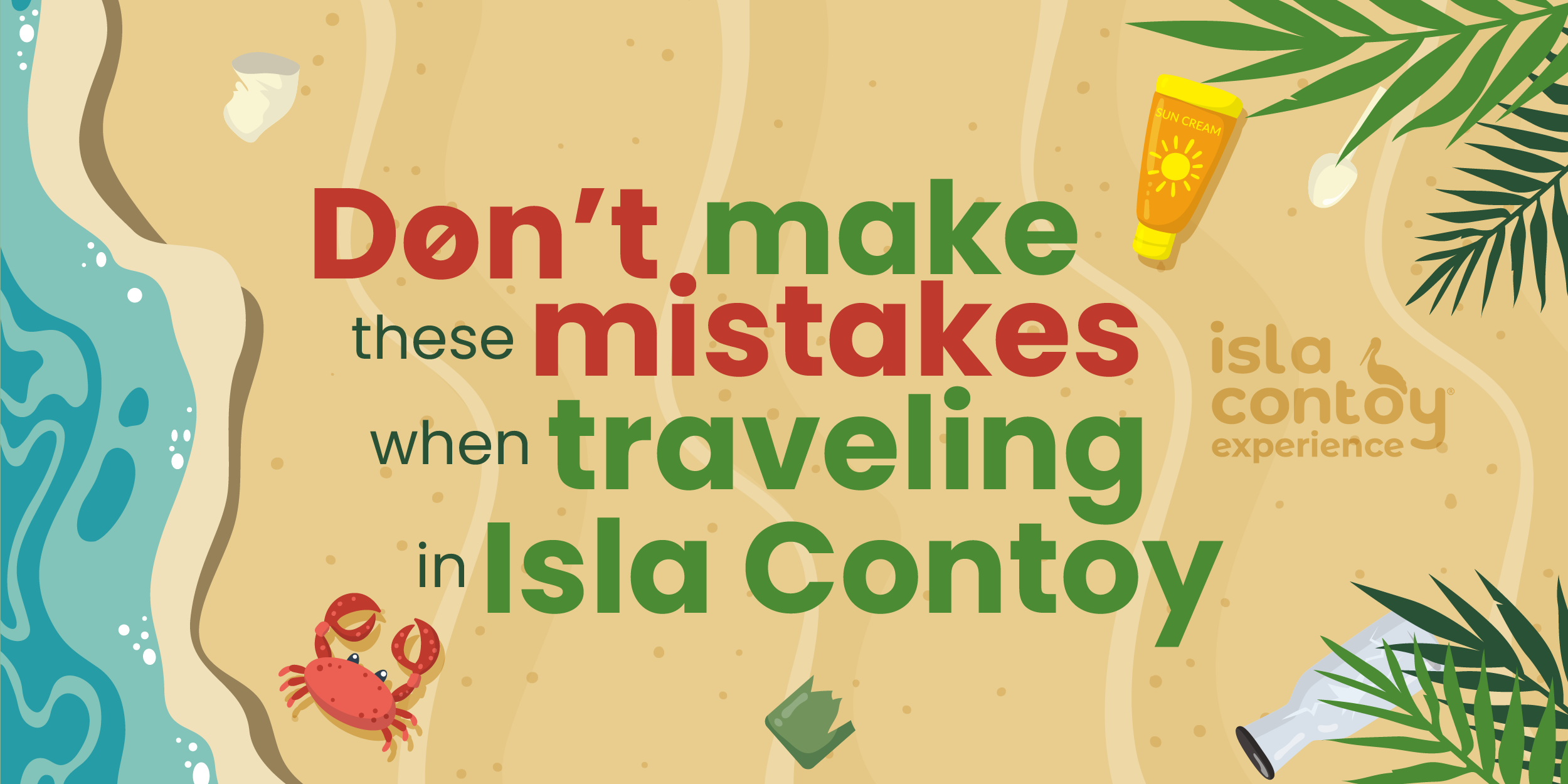We know you are a nature lover and love to visit and explore new places! That's why today we bring you a list of the five protected parks you can visit in Mexico. You can't miss them!
Fortunately, sustainable tourism is growing as a trend and an initiative by travelers and destinations to care for natural and cultural resources. As more and more people agree to minimize their footprint during their vacations, many natural destinations have opened their doors to visitors, especially in Mexico, a country with many areas full of natural wealth.
If you want to visit protected natural areas, here are five beautiful places you can't miss. Remember, by visiting them, you finance their care and promote sustainability by being part of responsible tourism.
Lagunas de Chacahua, OAXACA
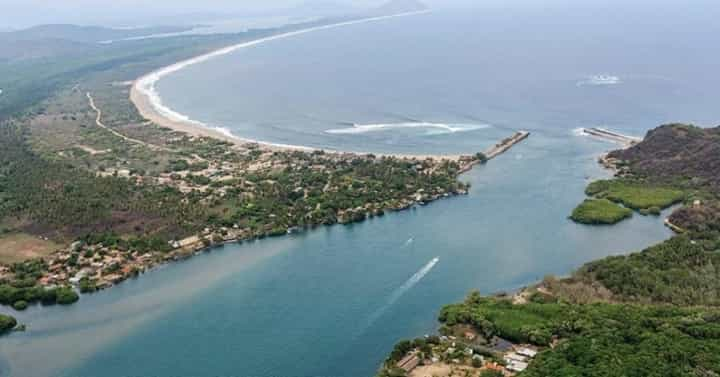 The marvelous lagoons of Chacahua by México Desconocido
The marvelous lagoons of Chacahua by México Desconocido
The Chacahua Lagoons in southern Mexico were declared a National Park on July 9, 1937. The park consists mainly of 598 hectares of land and 3324 hectares of the aquatic ecosystem. It is a compound of three bodies of water on the coast of Oaxaca: Chacahua Bay and Lagoon, and Tianguisto and Pastoría Lagoons.
✏️ Interesting facts about Lagunas de Chacahua National Park
- Its mangroves were declared a Ramsar site in February 2008.
- It is a habitat and nesting site for Leatherback, Hawksbill, and Olive Ridley turtles.
- It is important in the area's carbon sequestration and oxygen production.
- It produces food for different species that help maintain biodiversity.
- In the lagoon, 248 species of birds of 160 different genera have been recorded.
- It is home to Afro-Mexican communities and an important refuge for backpackers.
- It has ten different types of vegetation: thorn forest, flooded forest, deciduous forest, broadleaf forest, subtropical, mangroves, savannah, gallery forest, tule, palm grove, and coastal dunes.
- Chacahua comes from the Mixtec language and means a place full of shrimp.
⛺ Lagunas de Chacahua National Park Attractions and Activities
 The Magical Nature of Chacahua by Julia Holland
The Magical Nature of Chacahua by Julia Holland
- Eco tours by boat through the mangrove swamps
- Flora and fauna observation hikes
- Snorkeling and scuba diving
- Fishing
- Aquatic activities
- Visit the crocodile farm
- Bioluminescence experience
- Camping sites
- Local food tasting
📢 Recommendations when visiting Lagunas de Chacahua National Park
- As with any beach destination, protect yourself from the sun and use biodegradable sunscreen and mosquito repellent.
- Be well informed about the route to Chacahua, as there can be many steps. Don't worry, it's not difficult, but it doesn't hurt to know it beforehand.
- Be sure to try the fish stuffed with seafood, agua chiles, oysters, and Pescado a la Talla.
📍Where is Lagunas de Chacahua National Park?
Here is a map for consultation 👇
Sierra de Órganos, Zacatecas
 Sierra de órganos (Photo by Wikipedia)
Sierra de órganos (Photo by Wikipedia)
From mangroves and rainforests, we move on to an arid environment. The second National Park on this list is in the municipality of Sombrerete in Zacatecas. Sierra de Órganos declared a National Park on November 27, 2000, has 1125 hectares and is characterized by its imposing elevated rock formations.
Its vertical rocks were created from volcanic activity and took their shape thanks to erosion.
✏️ Interesting facts about Sierra de Órganos National Park
⛺ Sierra de Órganos National Park Attractions and Activities
- El campanario
- La cueva del toro
- Mesa de los indios
- Hiking and excursions
- Camping area
- Mountaineering
- Rappel
- Cycling
- Visit the Magical Town of Sombrerete
📢 Recommendations when visiting Sierra de Órganos National Park
- Do not leave the marked trails unless you have experience in mountain hiking and know the area well.
- Wear safe footwear that protects your feet from sprains, scrapes, or insect bites.
- Bring sunscreen, a hat, and long sleeves to protect you from the sun.
- If you are spending the night in the park, wear warm clothing.
- Follow the recommendations of the guides and authorities at all times to avoid getting lost and accidents.
📍Where is the Sierra de Órganos National Park?
Here is a map for consultation 👇
Cumbres de Monterrey
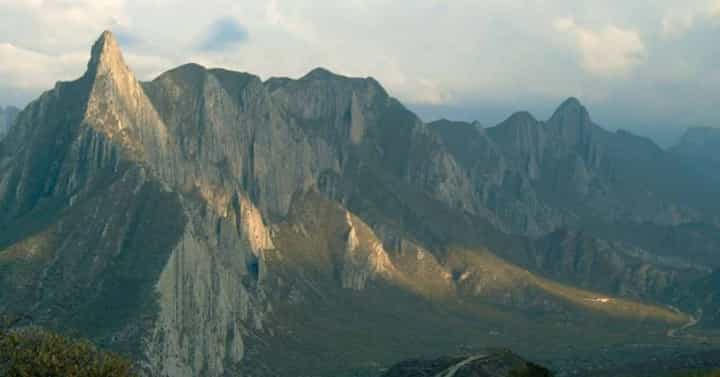 Photo: Parque Nacional Cumbres de Monterrey (CONANP)
Photo: Parque Nacional Cumbres de Monterrey (CONANP)
This park was created on November 24, 1939. It has 177,395 hectares and was built to conserve a natural area in response to the growth of the metropolitan area. It is located in the Sierra Madre Oriental and borders seven municipalities in Nuevo León.
✏️ Interesting facts about Cumbres de Monterrey National Park
- There are 1,368 species of flora and fauna, of which 73 are endangered, threatened, or under protection.
- Its predominant vegetation is coniferous forest.
- The puma, badger, raccoon, white-tailed deer, opossum, armadillo, wild boar, gray and red squirrels, cardinal, and peregrine falcon are among its fauna.
- It produces 70% of the water consumed by the city of Monterrey.
- It has been part of the World Network of Biosphere Reserves since September 2006.
⛺ Cumbres de Monterrey National Park Attractions and Activities
- Cola de caballo waterfall
- El Chipitín waterfall
- Gritas de García
- Chipinque Ecological Park
- Matacanes Canyon
- Bungee Jumping in San Pedro Garza
- Hiking
- Zipline
- Mountaineering
- Rappel
- Cabin rentals
- ATVs
📢Recommendations when visiting Cumbres de Monterrey National Park
Be a responsible tourist. Your visit is economic support for the conservation of the park. We must take care of it and avoid polluting it since it is prone to fires and is the water source for millions of people.
- Do not leave the marked trails unless you have experience in mountain hiking and know the area well.
- Wear safe footwear that protects your feet from sprains, scrapes, or insect bites.
- Bring sunscreen, a hat, and long sleeves to protect you from the sun.
- If you are spending the night in the park, wear warm clothing.
- Follow the recommendations of the guides and authorities at all times to avoid getting lost and accidents.
📍Where is located Cumbres de Monterrey?
Here is a map for consultation 👇
Lagunas de Zempoala, Morelos
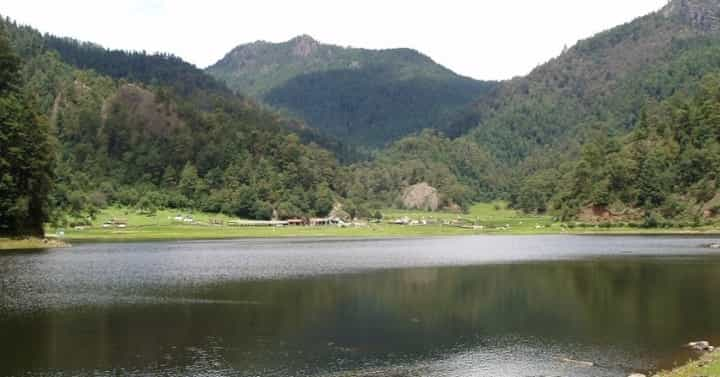 Photo by Wikipedia
Photo by Wikipedia
The Lagunas de Zempoala were declared a Natural Protected Area in 1936. It is located in the Estado de Mexico and Morelos. It consists of 4790 hectares of aquatic biodiversity. The place comprises the Quila, Zempoala, Compila, Tonatihua, Seca, Prieta, and Hueyapan lagoons.
✏️ Interesting facts about Lagunas de Zempoala National Park
- Its climate is cold and sub-humid, with rains in summer.
- The place is full of gold and many natural riches.
- Its predominant vegetation is coniferous forest.
- The Teporingo is an endemic animal of the national park.
- Its fauna includes skunks, squirrels, pumas, deer, white-tailed deer, hummingbirds, hawks, salamanders, and rainbow trout, the latter in danger of extinction.
- The park is pet-friendly. You can bring your pet on a leash and be responsible for its waste.
⛺ Lagunas de Zempoala National Park Attractions and Activities
- Visit the Museum for Culture and Conservation.
- Horseback riding
- Mountaineering
- Cycling
- Hiking
- Picnic
- Camping
- Boat rides
📢 Recommendations when visiting Lagunas de Zempoala National Park
- Wear warm clothes.
- Arrive early to take advantage of the weather because the park is extensive.
- Enjoy the local gastronomy.
- Wear comfortable, safe shoes that protect your feet from sprains, scrapes, or insect bites.
- Follow the recommendations of the guides and authorities at all times to avoid getting lost and accidents.
📍 Where is Lagunas de Zempoala National Park?
Here is a map for consultation 👇
Cañón del Sumidero, Chiapas
 Photo by Wikipedia
Photo by Wikipedia
Sumidero Canyon is located in the state of Chiapas. It was declared a national park on December 8, 1980. The park borders the municipalities of Tuxtla Gutiérrez, Chiapa de Corzo, Soyaló, Osumacinta and San Fernando. This canyon is formed by rocks surrounding the Grijalva River and has an approximate extension of 30 kilometers.
✏️ Interesting facts about Cañón del Sumidero National Park
- The rocks we can see in the canyon date from 136 million years ago, which indicates that in ancient times, this area was submerged in a shallow sea.
- Its walls reach 1000 meters high.
- On February 2, 2004, it was declared a Ramsar site.
- Its climate is sub-humid and warm most of the year.
- It is home to 1736 species of flora and fauna.
- Among the predominant fauna are the river crocodile, the hocofaisan, the white heron, the cormorant, the spider monkey, white and brown pelicans, the white-tailed deer, the wild boar, the sea turtle, and several species of fish.
⛺ Sumidero Canyon National Park Attractions and Activities
- Boat ride on the Grijalva River.
- Tour by car through the five viewpoints: La Ceiba, La Coyota, El Roblar, El Tepehuaje, and Los Chiapa.
- Visit to Chiapa de Corzo
- Visit to San Cristobal de las Casas
- Grijalva River Bridge
- Flora and fauna sighting
- Ziplining
- Kayaking
📢 Recommendations when visiting the Sumidero Canyon National Park
- Bring sunglasses, a hat, and sunscreen.
- Bring mosquito repellent.
- Bring an extra change of clothes, as water may splash during the boat ride.
- Bring a jacket in case it rains.
- Access to the viewpoints is from 8:00 am to 5:00 pm, and they are open daily, except Tuesdays.
- Amber is a typical product of Chiapas. Don't forget to visit the jewelry shops and handicraft selling areas.
📍Where is Sumidero Canyon National Park?
Here is a map for consultation 👇
🛑 Before we finish...we have one last recommendation 🛑
Isla Contoy, Quintana Roo
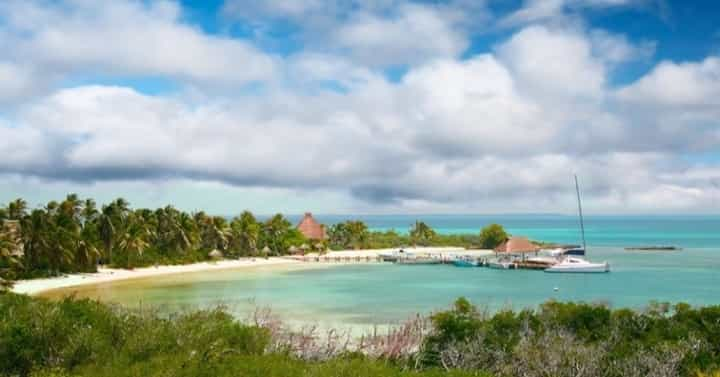
This post could not miss our favorite National Park: Isla Contoy. This park and protected natural area receives only 200 tourists daily to maintain its natural balance. It is only 8 kilometers long and greatly values the area's biodiversity. Learn more about this beautiful island in our Complete Guide to Isla Contoy National Park, or reserve your place to live an exclusive experience in Contoy.
If you love eco-tourism...
What did you think of our selection of National Parks in Mexico? Remember that visiting these places helps to finance their care. Although you will have to follow some easy rules for their conservation, you will be amazed by all the natural wealth they offer.
Would you like to talk about a specific topic? Leave us a comment below, and we'll get back to you 👇.

 The marvelous lagoons of Chacahua by México Desconocido
The marvelous lagoons of Chacahua by México Desconocido The Magical Nature of Chacahua by Julia Holland
The Magical Nature of Chacahua by Julia Holland Sierra de órganos (Photo by Wikipedia)
Sierra de órganos (Photo by Wikipedia) Photo: Parque Nacional Cumbres de Monterrey (CONANP)
Photo: Parque Nacional Cumbres de Monterrey (CONANP)

